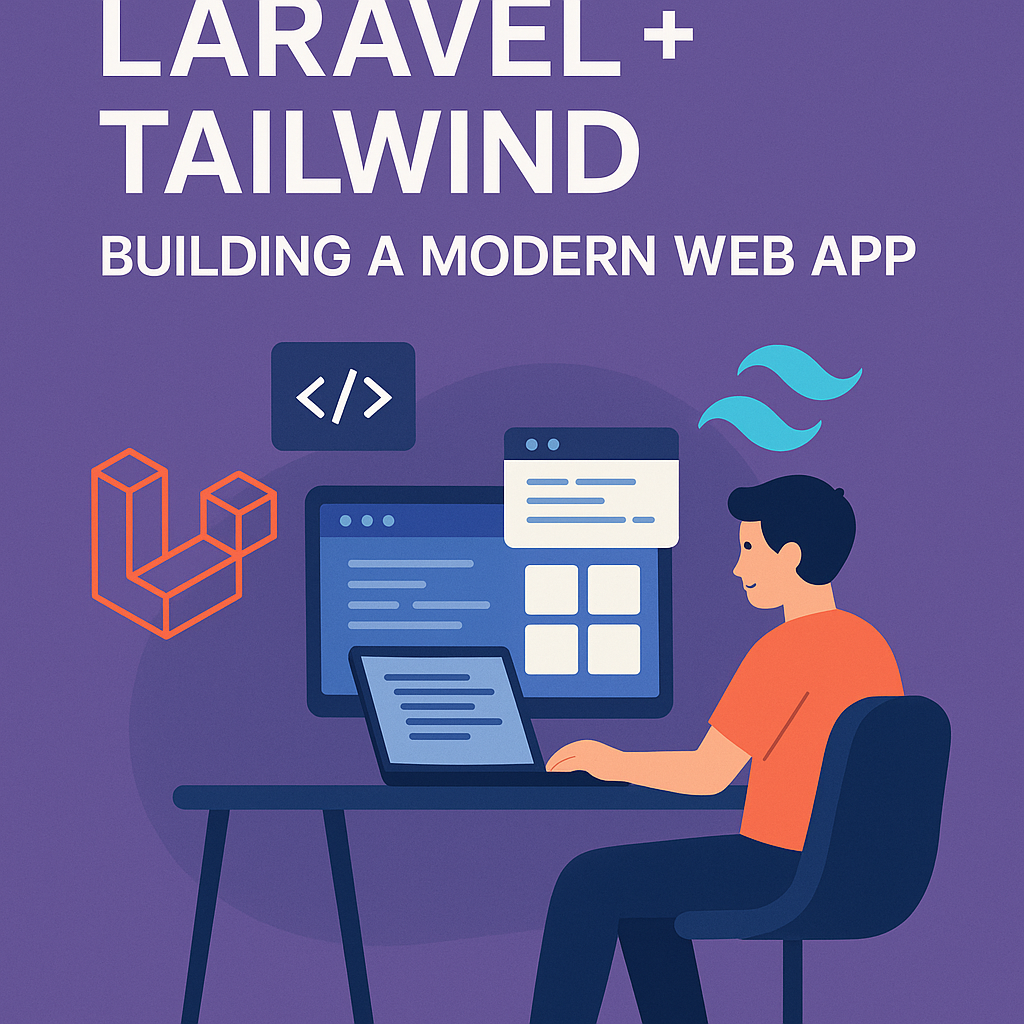Introduction
Web development has evolved rapidly, and developers today demand speed, scalability, and clean design. Two tools that perfectly complement each other in achieving this are Laravel and Tailwind CSS.
- Laravel is a powerful PHP framework that simplifies backend development with expressive syntax, built-in authentication, and database handling.
- Tailwind CSS is a utility-first CSS framework that allows developers to design responsive, modern UIs without writing a single custom CSS class.
In this guide, we’ll walk through how to set up Laravel with Tailwind and build a simple modern web app. Whether you’re a beginner or transitioning from another stack, this tutorial will give you a solid foundation.
Why Laravel + Tailwind?
Before diving in, let’s clarify why this combination is so popular among developers:
✅ Laravel Benefits
- MVC architecture (separation of concerns).
- Built-in routing, authentication, and database migrations.
- Huge ecosystem (Laravel Breeze, Jetstream, Livewire).
✅ Tailwind Benefits
- Utility-first approach → faster prototyping.
- Responsive design out of the box.
- No bloated CSS → better performance.
- Works seamlessly with Blade components.
👉 Together, they make web apps powerful, fast, and beautiful.
Step 1: Setting Up Laravel Project
First, ensure you have Composer and PHP (>=8.0) installed.
Run the following command to create a new Laravel project:
composer create-project laravel/laravel laravel-tailwind-app
cd laravel-tailwind-app
Start the local server:
php artisan serve
Now you can access your app at http://127.0.0.1:8000.
Step 2: Installing Tailwind CSS
To add Tailwind, you’ll need Node.js and npm.
Run:
npm install -D tailwindcss postcss autoprefixer
npx tailwindcss init -p
This generates two files:
tailwind.config.js→ configuration file.postcss.config.js→ enables PostCSS.
Update tailwind.config.js:
content: [
"./resources/**/*.blade.php",
"./resources/**/*.js",
"./resources/**/*.vue",
]
In resources/css/app.css, replace content with:
@tailwind base;
@tailwind components;
@tailwind utilities;
Compile CSS with:
npm run dev
✅ Now Tailwind is integrated with your Laravel project.
Step 3: Building a Layout with Blade + Tailwind
Let’s create a basic layout using Laravel Blade and Tailwind.
Create a file: resources/views/layouts/app.blade.php
<!DOCTYPE html>
<html lang="en">
<head>
<meta charset="UTF-8">
<meta name="viewport" content="width=device-width, initial-scale=1.0">
<title>{{ config('app.name', 'Laravel Tailwind App') }}</title>
@vite('resources/css/app.css')
</head>
<body class="bg-gray-100 text-gray-900">
<nav class="bg-white shadow p-4">
<div class="container mx-auto flex justify-between">
<a href="/" class="font-bold text-lg text-blue-600">MyApp</a>
<div>
<a href="/" class="px-3 hover:text-blue-500">Home</a>
<a href="/about" class="px-3 hover:text-blue-500">About</a>
</div>
</div>
</nav>
<main class="container mx-auto mt-8">
@yield('content')
</main>
</body>
</html>
This gives us a clean navbar + layout.
Step 4: Creating a Homepage
Create resources/views/home.blade.php:
@extends('layouts.app')
@section('content')
<div class="bg-white shadow rounded p-6">
<h1 class="text-2xl font-bold mb-4">Welcome to Laravel + Tailwind!</h1>
<p class="text-gray-700">
This is your first modern web app built with the power of Laravel and Tailwind CSS.
</p>
<a href="/about"
class="mt-4 inline-block px-4 py-2 bg-blue-600 text-white rounded hover:bg-blue-700">
Learn More
</a>
</div>
@endsection
Update routes/web.php:
Route::get('/', function () {
return view('home');
});
Route::get('/about', function () {
return view('about');
});
Step 5: Adding an About Page
Create resources/views/about.blade.php:
@extends('layouts.app')
@section('content')
<div class="bg-white shadow rounded p-6">
<h1 class="text-2xl font-bold mb-4">About This Project</h1>
<p class="text-gray-700">
This project demonstrates how Laravel (backend) and Tailwind CSS (frontend)
work together to build fast, scalable, and beautiful web apps.
</p>
</div>
@endsection
Step 6: Optional Enhancements
- ✅ Add Laravel Breeze or Jetstream → authentication + Tailwind UI.
- ✅ Use Alpine.js for interactivity (dropdowns, modals).
- ✅ Deploy on VPS / DigitalOcean / Laravel Forge.
SEO & Performance Tips
- Add meta tags in
layouts/app.blade.php. - Use Laravel Mix or Vite for asset minification.
- Use lazy-loading images for speed.
- Add Open Graph tags for social media sharing.
Conclusion
By combining Laravel’s backend power with Tailwind’s modern UI utilities, you can build web apps that are fast, scalable, and beautiful.
This beginner’s guide just scratches the surface. Next, you can expand into auth systems, CRUD apps, API integration, and Livewire/Alpine interactivity.
👉 Stay tuned on jacksonekai360.com for more step-by-step tutorials, AI discussions, and advanced Laravel projects.


Leave a Reply